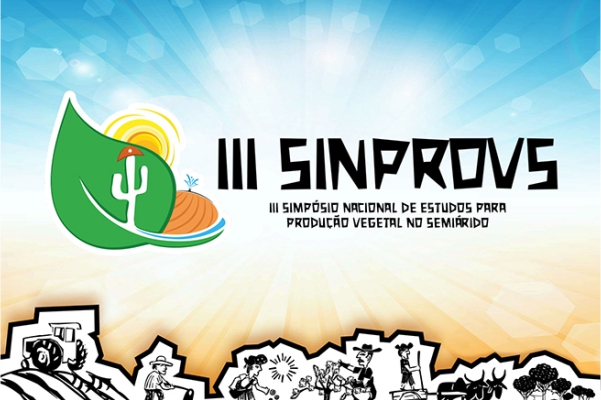EXOGENOUS GLUCOSE SUPPLYING DECREASE PHOTOSYNTHESIS THROUGH IN VIVO PEPCASE ACTIVITY RESTRICTION AND METABOLIC LIMITATION IN SUGARCANE PLANTS
"2018-05-07 00:00:00" // app/Providers/../Base/Publico/Artigo/resources/show_includes/info_artigo.blade.php
App\Base\Administrativo\Model\Artigo {#1845 // app/Providers/../Base/Publico/Artigo/resources/show_includes/info_artigo.blade.php #connection: "mysql" +table: "artigo" #primaryKey: "id" #keyType: "int" +incrementing: true #with: [] #withCount: [] +preventsLazyLoading: false #perPage: 15 +exists: true +wasRecentlyCreated: false #escapeWhenCastingToString: false #attributes: array:35 [ "id" => 40422 "edicao_id" => 86 "trabalho_id" => 203 "inscrito_id" => 220 "titulo" => "EXOGENOUS GLUCOSE SUPPLYING DECREASE PHOTOSYNTHESIS THROUGH IN VIVO PEPCASE ACTIVITY RESTRICTION AND METABOLIC LIMITATION IN SUGARCANE PLANTS" "resumo" => "Sugarcane photosynthesis and production are deeply regulated by its source-sink relationships, however the mechanisms involved in this process are not fully understood to date. Aiming to verify whether photosynthesis inhibition in sugarcane plants is regulated by glucose or fructose, attached leaves of 4-month-old plants were sprayed with 50 mM exogenous glucose or fructose over five days in growth chamber conditions. Steady-state CO2 assimilation decreased, whereas intercellular CO2 partial pressure increased and stomatal conductance did not change after glucose and fructose application, indicating that photosynthesis was most inhibited by biochemical limitation. Photosystem II activity was slightly reduced by exogenous glucose and did not change by exogenous fructose. The initial slope of A-Ci curve (k), related to PEP carboxylation activity, strongly decreased by glucose (65%) and fructose (47%), while the metabolic limitation increased by 44% and 28%, while the stomatal limitation did not change after glucose and fructose application, respectively. The sugar profile had slight changes in leaves of glucose- and fructose-supplied plants, with increases of sucrose content of both treatments and increases of sucrose/hexose ratio only in glucose-treated plants. These results were not enough to identify which sugar is directly involved with photosynthesis down-regulation, but it seems clear that glucose is a promising candidate to be involved in this process in sugarcane plants. These data suggest that exogenous glucose is more effective than exogenous fructose to inhibit CO2 assimilation by reducing in vivo PEPCase activity through metabolic limitations." "modalidade" => "Pôster (PO)" "area_tematica" => "AT 04. Impactos dos fatores bióticos e abióticos na Produção Vegetal" "palavra_chave" => "CO2 ASSIMILATION, FRUCTOSE, SUGAR" "idioma" => "Inglês" "arquivo" => "TRABALHO_EV105_MD4_SA4_ID220_20042018105255.pdf" "created_at" => "2020-05-28 15:53:25" "updated_at" => "2020-06-10 12:58:04" "ativo" => 1 "autor_nome" => "ANA KARLA MOREIRA LOBO" "autor_nome_curto" => "ANA LOBO" "autor_email" => "karlamlobo@gmail.com" "autor_ies" => null "autor_imagem" => "" "edicao_url" => "anais-iii-sinprovs" "edicao_nome" => "Anais III SINPROVS" "edicao_evento" => "III Simpósio Nacional de Estudos para a Produção Vegetal no Semiárido" "edicao_ano" => 2018 "edicao_pasta" => "anais/sinprovs/2018" "edicao_logo" => "5e4d837f4ee5d_19022020155039.png" "edicao_capa" => "5f1880cbf32a5_22072020150915.jpg" "data_publicacao" => null "edicao_publicada_em" => "2018-05-07 00:00:00" "publicacao_id" => 54 "publicacao_nome" => "Revista SINPROVS" "publicacao_codigo" => "978-85-7946-272-6" "tipo_codigo_id" => 2 "tipo_codigo_nome" => "ISBN" "tipo_publicacao_id" => 1 "tipo_publicacao_nome" => "ANAIS de Evento" ] #original: array:35 [ "id" => 40422 "edicao_id" => 86 "trabalho_id" => 203 "inscrito_id" => 220 "titulo" => "EXOGENOUS GLUCOSE SUPPLYING DECREASE PHOTOSYNTHESIS THROUGH IN VIVO PEPCASE ACTIVITY RESTRICTION AND METABOLIC LIMITATION IN SUGARCANE PLANTS" "resumo" => "Sugarcane photosynthesis and production are deeply regulated by its source-sink relationships, however the mechanisms involved in this process are not fully understood to date. Aiming to verify whether photosynthesis inhibition in sugarcane plants is regulated by glucose or fructose, attached leaves of 4-month-old plants were sprayed with 50 mM exogenous glucose or fructose over five days in growth chamber conditions. Steady-state CO2 assimilation decreased, whereas intercellular CO2 partial pressure increased and stomatal conductance did not change after glucose and fructose application, indicating that photosynthesis was most inhibited by biochemical limitation. Photosystem II activity was slightly reduced by exogenous glucose and did not change by exogenous fructose. The initial slope of A-Ci curve (k), related to PEP carboxylation activity, strongly decreased by glucose (65%) and fructose (47%), while the metabolic limitation increased by 44% and 28%, while the stomatal limitation did not change after glucose and fructose application, respectively. The sugar profile had slight changes in leaves of glucose- and fructose-supplied plants, with increases of sucrose content of both treatments and increases of sucrose/hexose ratio only in glucose-treated plants. These results were not enough to identify which sugar is directly involved with photosynthesis down-regulation, but it seems clear that glucose is a promising candidate to be involved in this process in sugarcane plants. These data suggest that exogenous glucose is more effective than exogenous fructose to inhibit CO2 assimilation by reducing in vivo PEPCase activity through metabolic limitations." "modalidade" => "Pôster (PO)" "area_tematica" => "AT 04. Impactos dos fatores bióticos e abióticos na Produção Vegetal" "palavra_chave" => "CO2 ASSIMILATION, FRUCTOSE, SUGAR" "idioma" => "Inglês" "arquivo" => "TRABALHO_EV105_MD4_SA4_ID220_20042018105255.pdf" "created_at" => "2020-05-28 15:53:25" "updated_at" => "2020-06-10 12:58:04" "ativo" => 1 "autor_nome" => "ANA KARLA MOREIRA LOBO" "autor_nome_curto" => "ANA LOBO" "autor_email" => "karlamlobo@gmail.com" "autor_ies" => null "autor_imagem" => "" "edicao_url" => "anais-iii-sinprovs" "edicao_nome" => "Anais III SINPROVS" "edicao_evento" => "III Simpósio Nacional de Estudos para a Produção Vegetal no Semiárido" "edicao_ano" => 2018 "edicao_pasta" => "anais/sinprovs/2018" "edicao_logo" => "5e4d837f4ee5d_19022020155039.png" "edicao_capa" => "5f1880cbf32a5_22072020150915.jpg" "data_publicacao" => null "edicao_publicada_em" => "2018-05-07 00:00:00" "publicacao_id" => 54 "publicacao_nome" => "Revista SINPROVS" "publicacao_codigo" => "978-85-7946-272-6" "tipo_codigo_id" => 2 "tipo_codigo_nome" => "ISBN" "tipo_publicacao_id" => 1 "tipo_publicacao_nome" => "ANAIS de Evento" ] #changes: [] #casts: array:14 [ "id" => "integer" "edicao_id" => "integer" "trabalho_id" => "integer" "inscrito_id" => "integer" "titulo" => "string" "resumo" => "string" "modalidade" => "string" "area_tematica" => "string" "palavra_chave" => "string" "idioma" => "string" "arquivo" => "string" "created_at" => "datetime" "updated_at" => "datetime" "ativo" => "boolean" ] #classCastCache: [] #attributeCastCache: [] #dates: [] #dateFormat: null #appends: [] #dispatchesEvents: [] #observables: [] #relations: [] #touches: [] +timestamps: false #hidden: [] #visible: [] +fillable: array:13 [ 0 => "edicao_id" 1 => "trabalho_id" 2 => "inscrito_id" 3 => "titulo" 4 => "resumo" 5 => "modalidade" 6 => "area_tematica" 7 => "palavra_chave" 8 => "idioma" 9 => "arquivo" 10 => "created_at" 11 => "updated_at" 12 => "ativo" ] #guarded: array:1 [ 0 => "*" ] }



